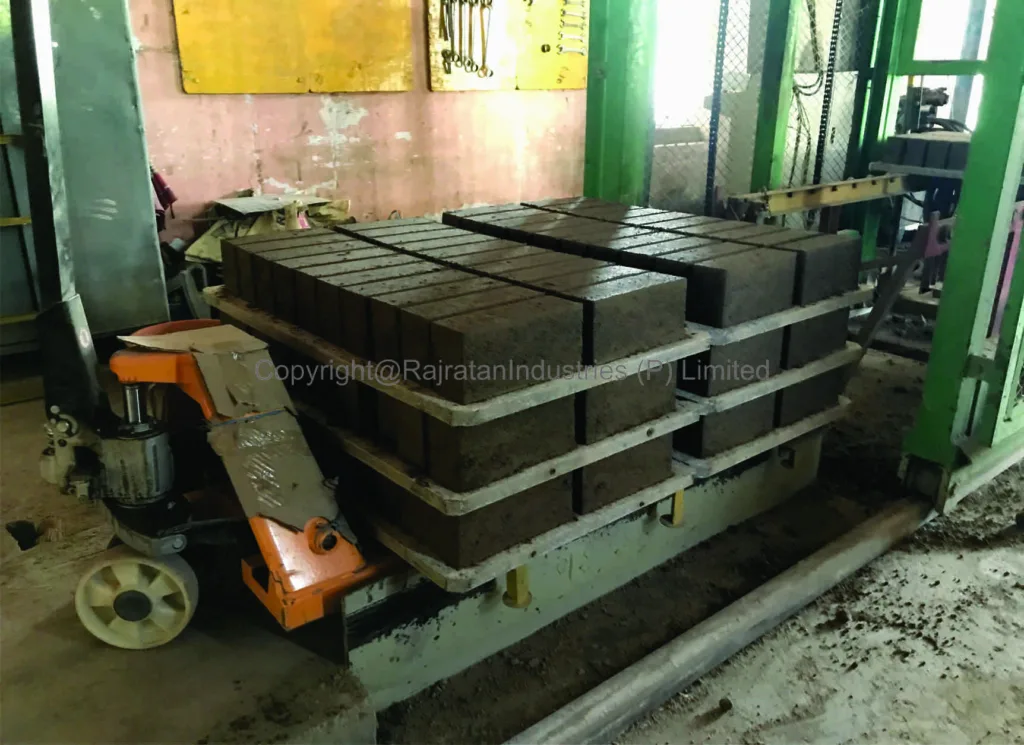Manufacturing Process of Fly Ash Bricks: Step-by-Step Guide on How They Are Made
Manufacturing Process of Fly Ash Bricks: Step-by-Step Guide on How They Are Made
Blog Article

In recent years, fly ash bricks have emerged as a sustainable and cost-effective alternative to traditional clay bricks. Known for their durability, eco-friendliness, and strength, these bricks are widely used in modern construction. But have you ever wondered how these bricks are made?
In this article, we’ll walk you through the manufacturing process of fly ash bricks: step-by-step guide on how they are made — brought to you by Rajratan Industries, India’s trusted manufacturer of fly ash brick pallets.
Step 1: Collection of Raw Materials
The manufacturing process starts with the collection of key raw materials:
Fly Ash (main ingredient, a by-product of coal combustion in thermal power plants)
Sand or Stone Dust
Cement or Lime
Gypsum
Water
These ingredients are carefully proportioned to ensure the right composition for strong and durable bricks.
Step 2: Mixing
All raw materials are fed into a pan mixer or a concrete mixer. Water is added gradually to ensure a homogenous mixture. This is a crucial step as the strength of the bricks depends on the consistency and proper mixing of materials.
Step 3: Molding
Once the mix is ready, it is fed into a hydraulic press or a mechanical machine for molding. The material is pressed into the desired shape using high pressure. Molds typically have standard dimensions, but custom sizes can also be produced based on the project requirements.
Step 4: Drying
After molding, the bricks are stacked and left to air dry for 24 to 48 hours. This step ensures that excess moisture evaporates before curing. It also prevents cracks or damage during the next phase.
Step 5: Curing
Curing is done either by water spraying or steam. The bricks are kept in a curing chamber or tank for about 7 to 14 days. This step is essential for gaining strength and enhancing durability.
Step 6: Quality Inspection
Before dispatching, every batch undergoes strict quality control checks. Parameters like compressive strength, water absorption, and dimensions are tested to meet construction standards.
Step 7: Packaging and Transportation
Finally, the bricks are packed and loaded for delivery. To prevent breakage during transportation, fly ash brick pallets play a critical role. Rajratan Industries provides high-quality brick pallets that ensure safe handling and longevity during storage and transit.
Why Choose Fly Ash Bricks?
Eco-Friendly: Made from industrial waste materials, reducing environmental impact.
Cost-Effective: Lower construction costs compared to traditional bricks.
Durable: Higher strength and longer life span.
Less Water Usage: Requires less water during construction.
Faster Construction: Uniform shapes and sizes reduce plastering work.
About Rajratan Industries
Rajratan Industries is India’s trusted manufacturer of Fly Ash Brick Pallets, playing a key role in the fly ash brick manufacturing ecosystem. Our pallets are designed to provide strength, durability, and stability—making them ideal for brick molding and curing. With years of experience and a commitment to quality, we support fly ash brick manufacturers across the country in achieving operational excellence.
If you’re in the fly ash brick business or planning to start, understanding the manufacturing process of fly ash bricks: step-by-step guide on how they are made can give you a strong foundation. Partner with Rajratan Industries for reliable brick pallet solutions that enhance your production process.
Tags: Fly Ash Bricks, Brick Manufacturing, Sustainable Building Materials, Rajratan Industries, Brick Pallets, Eco-Friendly Construction
Report this page